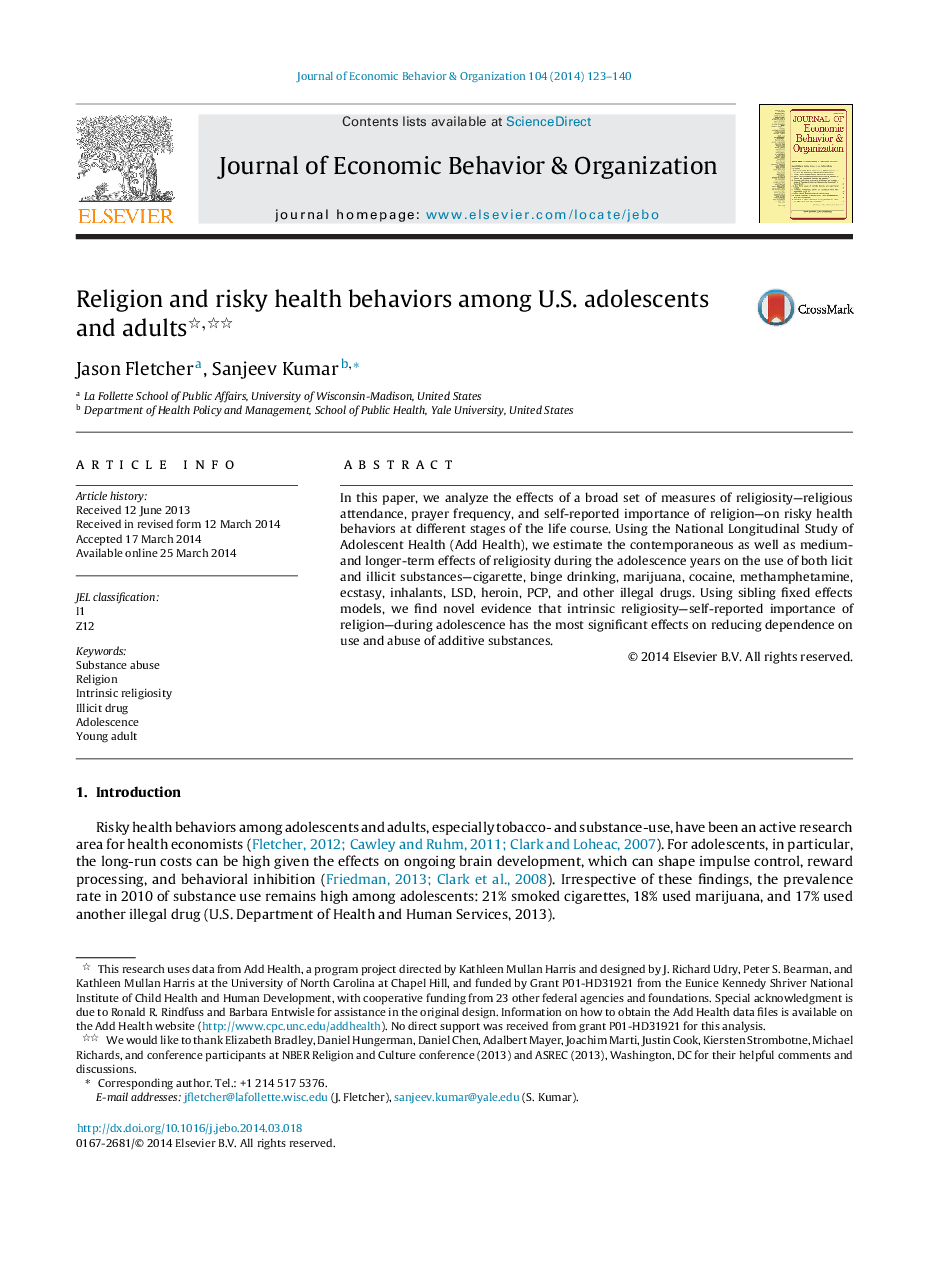| Article ID | Journal | Published Year | Pages | File Type |
|---|---|---|---|---|
| 883553 | Journal of Economic Behavior & Organization | 2014 | 18 Pages |
In this paper, we analyze the effects of a broad set of measures of religiosity—religious attendance, prayer frequency, and self-reported importance of religion—on risky health behaviors at different stages of the life course. Using the National Longitudinal Study of Adolescent Health (Add Health), we estimate the contemporaneous as well as medium- and longer-term effects of religiosity during the adolescence years on the use of both licit and illicit substances—cigarette, binge drinking, marijuana, cocaine, methamphetamine, ecstasy, inhalants, LSD, heroin, PCP, and other illegal drugs. Using sibling fixed effects models, we find novel evidence that intrinsic religiosity—self-reported importance of religion—during adolescence has the most significant effects on reducing dependence on use and abuse of additive substances.
